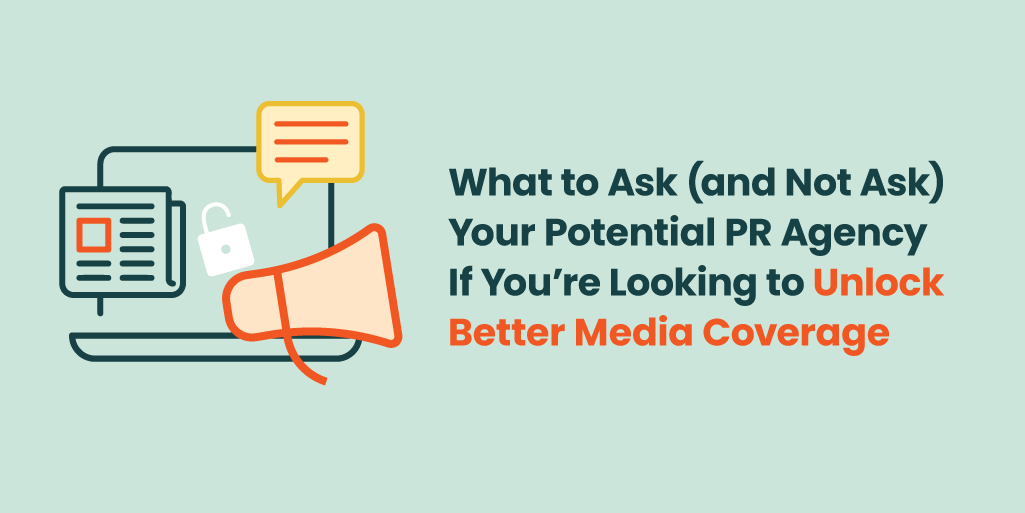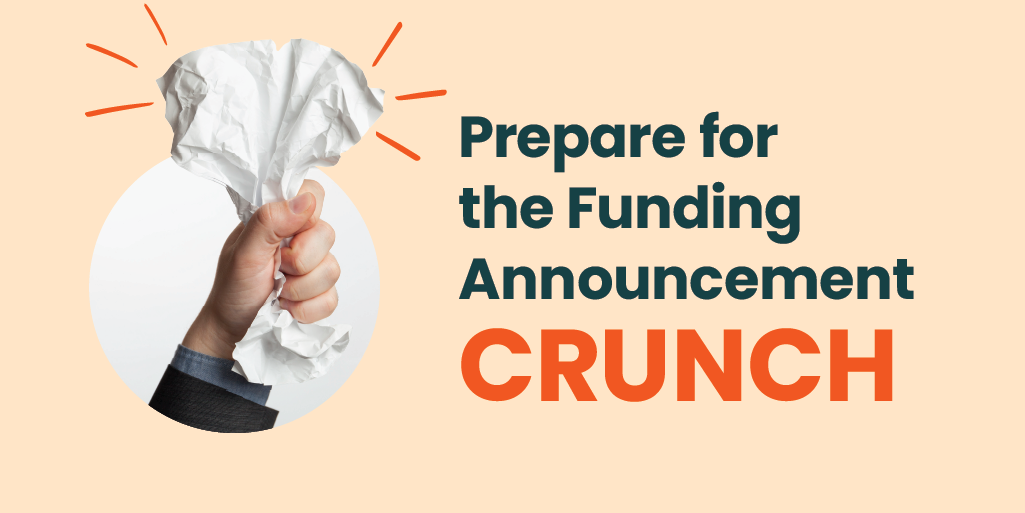“Can you get us into the Wall Street Journal?”
As a PR agency, we get this question (or one very much like it) from prospects fairly often. The answer is usually “maaaaybe, it depends….”
It depends on a whole host of factors. Who you are. What your story is. What you’re willing to say. When you want to announce. What else is going on in the news at that time. The list goes on and makes for a pretty robust conversation.
But is it the right question to ask? I’d argue that simply asking this question reduces your chances of getting the coverage you want.
I’ll explain, but first let me be crystal clear about one thing: it’s not that PR agencies aren’t willing to sign up to ambitious goals and be accountable for achieving them. We aren’t holding fast to some outdated notion that PR is a dark art completely removed from commercial reality. Far from it. Most PR agencies today are acutely aware that they must deliver tangible impact to their clients’ business. We get that there must be ROI. The tremendous strides forward in PR measurement and the emergence of marketing-savvy agencies are evidence of that.
But the problem with this question is that it signals a likely disconnect about what it takes to secure top tier media coverage. Ironically, it’s that disconnect that’s most likely to stand in the way of such coverage.
Let’s consider the question again: “Can you get us in the Wall Street Journal?” (See also, “How many business articles can you get us?” Or, “How much will it cost to get 10 articles in top-tier publications?”)
Firstly, the question implies that the agency is the only party involved in achieving the article. While agencies love to take the credit, the fact is it’s never just the agency. What the client brings to the table is just as important. Top-tier business publications earn their reputation and influence by writing the stories that matter to their readers. No matter how skilled and connected the agency is, if the story simply isn’t a fit for the publication, they won’t write it. That’s why the substance of your story is absolutely critical. If you ask us whether we can get you into the WSJ before telling us (and I mean really telling us, in detail) what your business is all about, how can we predict your chances of being a fit? We can’t glean this information from a quick scan of your website. If your WSJ-worthy story was that obvious, you’d already be in the WSJ by now. We need time to dig deep and find the untold aspect of your story so we can offer reporters something truly new. That process takes time and close collaboration.
Secondly, an article in the WSJ might not be what your business actually needs. Of course, a positive article in a top-tier publication can do wonders for your brand awareness. But is it really putting you in front of the right audience? Is awareness even the primary goal or do you need to educate a specific audience in order to close more deals? Is the story you’d have to tell in order to fit the publication’s editorial focus, the one you really want to prioritize?
Even if a WSJ article is exactly what you need, it’s never the only way to drive impact for your business. Modern buying committees consume multiple pieces of content, across a full spectrum of channels, before making a decision so it’s vital to surround them with mentions in trades, newsletters, social media, podcasts, events, as well as business publications. There’s also evidence to suggest that having a broad range of media coverage, all semantically linked, aids in getting your brand featured in AI search results. There are multiple paths to goal and you should pursue several of them.
The fact is, most startups have only one WSJ story in them. Do you really want to spend all your PR budget and time pursuing that one elusive goal? A strategic program that involves multiple channels and tactics can deliver outstanding ROI. And, the kicker is, the more coverage you have across the board, the more likely you are to be of interest to a top national publication.
Thirdly, a question like this could bias your selection process towards agencies who will tell you what you want to hear, not what you need to hear. How can an agency know they can land an article in the Wall Street Journal before they’ve heard the full details of your story? Don’t you want them to understand your business objectives and advise you on the best path to goal? It takes courage to refrain from making the easy sell with hollow promises. It takes courage to push back on a strategy that isn’t likely to succeed and suggest a stronger alternative. But that’s the agency you want fighting in your corner.
So what is the right question to ask? Try any of these:
“Can you share examples of coverage you’ve secured for similar clients?” If you want to know whether the agency has the skills to get great results for you, ask them what they’ve done before. Then ask them how that might translate to your program. It’ll open up a conversation about media strategy that will really allow you to see how much skill lies beneath the promises.
“What does it take for a company like ours to land top tier coverage?” This will allow you to assess the quality of the agency’s counsel. Do they have a strategy and an approach? Achieving top-tier coverage is a journey and you’ll want a partner who can lay out the path and guide you along it, rather than someone who just assures you you’ll get there but can’t articulate how.
“These are our business objectives. How can you help us achieve them?” This question allows you to get a much fuller picture of the agency’s capabilities and to see how they will drive ROI for you. In laying out your objectives, you’re also briefing the agency much more effectively so they can make more informed recommendations and bring a wider array of creative ideas to the table. This question sets up the relationship to be successful from the start by aligning both parties on the same business outcomes.
Hiring a PR agency is a big decision and you want to get it right. That means being confident you’ll get value from your investment. But getting a considered recommendation about what’s right — and what’s possible — for your particular business is far likelier to yield positive outcomes than simply eliciting a promise of a certain type of coverage.
So, while we could certainly answer “yes” (and point to examples of our clients in the WSJ here, here, and here), we prefer to roll up our sleeves and figure out with our clients what it will really take. We believe it sets everyone up for far greater success.
Firebrand’s PR experts help tech brands navigate the new rules of PR to achieve outsize results. Let’s talk about what they can do for your business.
About the Author
Lucy Allen is a Principal at Firebrand, where she brings over 20 years of experience in technology PR, marketing and agency leadership. At Firebrand, she oversees the PR and content practices, leading integrated programs that help tech companies build their profile, pipeline and value. In addition to her client-facing work, Lucy plays a key role in developing Firebrand’s team and services, ensuring the agency continues to evolve and embrace new best practices. She is passionate about building high-performing teams, developing programs with strategic rigor, and helping clients craft compelling narratives that drive growth and differentiation.
Before joining Firebrand, Lucy held senior leadership roles at some of the world’s top communications firms. She served as U.S. Tech Practice Chair and Bay Area General Manager at Edelman, where she led communications strategy for major enterprise and emerging technology brands. Prior to that, she was Chief Strategy Officer at LEWIS, helping grow the U.S. business from the ground up over the course of more than a decade. Lucy’s deep expertise spans brand positioning, executive visibility, thought leadership, and campaign development, with a focus on delivering measurable impact. She is based in San Francisco.
Follow Lucy onLinkedIn, or read her insights onFirebrand's B2B tech marketing blog.




